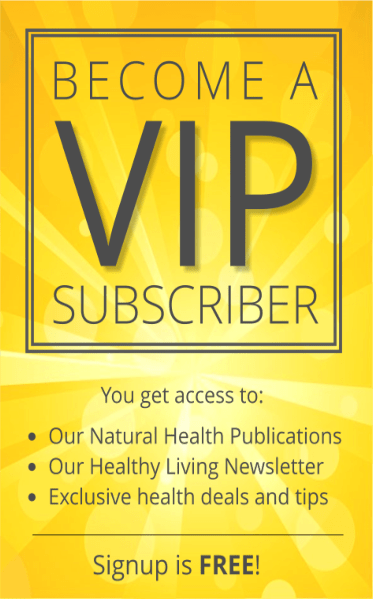Biohacking encompasses a personalized approach to enhancing health and performance through a detailed exploration of one’s own biology.
By adjusting diet and lifestyle, and integrating technology, individuals aim to optimize their biological functions for improved wellbeing.
Central to this practice is nutrigenomics, the study of how different foods can affect gene expression and overall health. This field offers insights into tailoring nutrition to one’s unique genetic makeup, promoting optimal bodily function.
Biohacking also has the potential for genetic optimization, leveraging scientific advancements to fine-tune genetic expressions for enhanced physical and cognitive performance.
This exploration gives us insights into our biological makeup, how we can tweak certain aspects of our biology, and how we can use certain proven strategies to push the boundaries of human potential.
Nutrigenomics: Eat According to Your Genes
Imagine a world where your dinner plate is curated not by the latest diet fad but by your own DNA. That’s nutrigenomics for you.
This science doesn’t care if your friend lost ten pounds on keto; it wants to tailor your diet based on your genetic predisposition.
So, you might get green-lighted for more avocados while your neighbor gets a nudge towards more kale. The goal?
To dodge diseases your genes might lean towards and to optimize your health. It’s like having a dietary cheat sheet, coded right into your DNA.
Eating according to your genes isn’t just smart; it’s the ultimate customization. Your body, your rules, right?
Embarking on a nutrigenomics journey to eat according to your genes is simpler than it sounds, and here’s how you can start this fascinating exploration:
Get Your DNA Tested
- Find a Reputable Genetic Testing Service: Look for services specializing in nutrigenomic analysis. These tests can pinpoint variations in your genes that affect nutrient absorption, metabolism, and the risk of certain diseases.
- Take the Test: Usually, it involves providing a saliva sample using a kit sent by the testing company. Follow the instructions carefully and send your sample back for analysis.
Understand Your Results
- Review Your Genetic Report: Once your DNA is analyzed, you’ll receive a report detailing how your genetics influence your response to different foods and nutrients.
- Consult a Professional: It’s wise to go over your results with a healthcare provider or a dietitian specialized in nutrigenomics. They can help interpret the findings and what they mean for your diet.
Tailor Your Diet
- Personalize Your Nutrition Plan: Based on your genetic report, adjust your diet to accommodate your body’s unique needs. This could mean increasing your intake of certain foods while reducing others.
- If your body metabolizes caffeine slowly, consider cutting down on coffee.
- If you have a genetic predisposition to absorb less vitamin C, you might need to include more vitamin C-rich foods in your diet.
Monitor and Adjust
- Track Your Progress: Keep an eye on how your body responds to the dietary changes. You might notice improvements in energy levels, weight management, and overall well-being.
- Be Flexible: Your diet may need adjustments as you go. What works perfectly today may need tweaking as your lifestyle, health status, or age changes.
Simple Tips for Success
- Start Small: You don’t need to overhaul your diet overnight. Begin with small, manageable changes based on your genetic insights.
- Focus on Whole Foods: Regardless of your genetic makeup, a diet rich in whole foods like vegetables, fruits, whole grains, and lean proteins is beneficial.
- Stay Informed: Nutrigenomics is a rapidly evolving field. Keep abreast of new research that could further refine your dietary choices.
Nutrigenomics empowers you to make informed dietary choices based on your genetic blueprint.
It’s not about following the latest diet trends but about understanding what your body needs to function at its best.
Your genes have a lot to say about your optimal diet, and listening to them is a smart step toward better health.
Intermittent Fasting: Time Your Meals Like a Pro
Intermittent fasting isn’t just a diet; it’s a timing belt for your eating habits. By cycling between periods of fasting and feasting, you’re not just playing hard to get with your food; you’re giving your body a metabolic tune-up.
Intermittent fasting cycles between eating and fasting to increase weight loss by lowering calorie intake and boosting fat burning.
It also adjusts hormones for better fat use and improves metabolic and heart health by reducing blood sugar, and inflammation from oxidative stress, and enhancing heart markers.
It also benefits brain health and may extend lifespan by promoting cellular repair.
For thin individuals, fasting may require careful consideration. Since fasting reduces calorie intake, it can lead to further weight loss, which might not be desirable for those already underweight.
It’s important to prioritize nutritional balance and consult with a healthcare professional to ensure fasting is approached safely and aligns with your individual health needs and goals.
This method promises not just a leaner physique but a sharper metabolic edge. Think of it as your body’s version of “closing the kitchen” to clean up and prepare for the next round.
Understanding Your Eating Windows
- Choose Your Fasting Plan: Start with popular methods like the 16:8 (fast for 16 hours, eat during an 8-hour window) or the 5:2 diet (eat normally for 5 days, reduce calorie intake for 2 days).
- Listen to Your Body: Adjust the eating and fasting periods based on how you feel. It’s crucial to find a rhythm that works for you, not against you.
Strategizing Your Nutrition
- Quality Over Quantity: Focus on nutrient-dense foods during your eating window to maximize health benefits and sustain energy levels.
- Stay Hydrated: Drink plenty of water throughout the day, especially during fasting periods, to help manage hunger and maintain hydration.
Planning for Success
- Prep Your Meals: Planning and preparing your meals in advance can help you stick to your eating window and ensure you’re consuming balanced nutrients.
- Mindful Eating: Use your eating window as an opportunity to practice mindful eating—savor each bite and pay attention to how your body feels, which can enhance satisfaction and prevent overeating.
Adapting to Your Lifestyle
- Flexibility Is Key: Life happens, and sometimes sticking to a strict schedule isn’t possible. Be flexible and willing to adjust your fasting plan as needed.
- Combine With Exercise: Incorporate regular physical activity into your routine. Exercise during your eating window for energy or just before to potentially boost fat burning.
Remember, Intermittent Fasting is a tool, not a one-size-fits-all solution. It’s important to consult with a healthcare professional before starting, especially if you have any health conditions or concerns.
Cold Therapy: Chill Your Way to Wellness
If you thought cold showers were just for the bravest of souls or those who forget to pay their heating bill, think again.
Cold therapy, encompassing everything from those shiver-inducing showers to full-blown ice baths, is not for the faint of heart.
Yet, it promises to kick your metabolism into high gear, boost your recovery times, and even sharpen your mental resilience.
Imagine starting your day with a jolt colder than your ex’s heart—that’s cold therapy.
It’s not just a test of willpower; it’s a way to tell your body, “Hey, wake up, we’ve got a world to conquer.”
Starting with Cold Showers
- Ease Into It: Begin your cold therapy journey with a lukewarm shower, gradually turning the temperature down until it’s cold for the last 30 seconds to a minute.
- Consistency is Key: Make it a daily ritual. The benefits of cold therapy, including boosted metabolism and enhanced mental resilience, increase with regular practice.
Taking the Ice Bath Plunge
- Prepare Your Ice Bath: Fill a tub with cold water and ice. Aim for a water temperature that’s cold but not so freezing that it shocks your body too harshly on your first attempt.
- Limit Your Time: Start with short immersions of around 2 to 5 minutes. Listen to your body and gradually increase your time spent in the ice bath as you become more accustomed to the cold.
Listen to Your Body
- Monitor Your Reactions: Pay attention to how your body responds during and after cold exposure. Mild discomfort is normal, but pain, numbness, or extreme distress signals that it’s time to stop.
- Gradual Progression: Don’t rush the process. Gradually decrease the water temperature over weeks or months. Your body’s tolerance and resilience to cold will improve over time.
Stay Informed and Safe
- Educate Yourself: Read up on cold therapy techniques and benefits. Understanding the why behind the practice can motivate you to stick with it.
- Health Check: If you have health concerns or conditions, consult with a healthcare professional before starting cold therapy. It’s not suitable for everyone and may pose risks for individuals with certain health issues.
Cold therapy, when practiced correctly and safely, can be a revitalizing addition to your wellness routine.
Whether you’re seeking to enhance your physical recovery, boost your metabolism, or sharpen your mental resilience, the chill of cold therapy could be just the wake-up call your body needs.
Remember, it’s about progress, not perfection. Start where you are, use what you have, and do what you can. The path to wellness is a journey, not a sprint.
Sleep Optimization: Crafting the Perfect Slumber
In the quest for peak performance, never underestimate the power of a good night’s sleep. Sleep optimization goes beyond fancy mattresses and silk pillowcases.
It’s about fine-tuning your entire sleep environment and habits—think blackout curtains, temperature control, and ditching those late-night screen sessions.
This isn’t just about catching Z’s but maximizing every minute of sleep for optimal recovery and performance.
Consider it your nightly tune-up for your brain and body, ensuring you wake up not just rested but truly rejuvenated.
Optimize Your Sleep Environment
- Introduce Blackout Curtains: Block out all external light to signal your brain it’s time to rest, helping you fall asleep faster and stay asleep longer.
- Adjust Room Temperature: Keep your bedroom at a cool, comfortable temperature to promote deeper, more restorative sleep.
Refine Your Pre-Sleep Routine
- Limit Screen Time: Turn off electronic devices at least an hour before bedtime to reduce blue light exposure, which can interfere with your sleep cycle.
- Establish a Relaxation Ritual: Engage in calming activities, such as reading or meditation, to prepare your mind and body for sleep, enhancing sleep quality and duration.
High-Intensity Interval Training (HIIT): Get Fit, Not Bored
HIIT is the antidote to every dull workout you’ve ever endured. Short bursts of intense exercise followed by brief rest periods keep your body guessing and your mind engaged.
It’s efficient, effective, and can be done in less time than it takes to watch an episode of your favorite series.
HIIT promises not just improved fitness and metabolic health, but a workout routine you might actually look forward to. Think of it as the espresso shot of exercise: quick, potent, and surprisingly addictive.
Starting with HIIT
- Find Your Format: Choose exercises you enjoy that can be ramped up in intensity, like sprinting, biking, or bodyweight movements.
- Set Your Timer: Begin with short intervals, such as 20 seconds of intense effort followed by 40 seconds of rest. Repeat for 15-30 minutes.
Keeping It Engaging
- Mix It Up: Regularly change your exercises and interval lengths to keep your body guessing and your workouts interesting.
- Track Progress: Use a notebook or an app to track your improvements in endurance, strength, and workout intensity over time.
Staying Safe and Motivated
- Listen to Your Body: Push for intensity but not at the expense of form or well-being. If you feel sharp pain or undue discomfort, take a break.
- Set Goals: Aim for personal bests, like completing more intervals in the same amount of time or increasing the intensity of your workouts.
Make It Social
- Find a Workout Buddy: Having a friend join you for HIIT sessions can boost motivation, make workouts more enjoyable, and encourage a bit of healthy competition.
- Join a Class or Group: Many gyms and fitness centers offer HIIT classes led by experienced instructors, which can provide structure, variety, and a supportive community.
Embrace Technology
- Use Fitness Apps: Many apps offer HIIT timer functions, workout ideas, and progress tracking to enhance your training experience.
- Seek Online Resources: From instructional videos to online fitness communities, there’s a wealth of knowledge and support available online to help you refine your HIIT technique, discover new workouts, and stay inspired.
By following these guidelines and incorporating the tips provided, you can ensure your HIIT workouts remain effective, safe, and, most importantly, enjoyable.
Remember, the ultimate goal is to find a fitness routine that you look forward to, one that challenges you while also offering the flexibility to fit into your lifestyle.
Mindfulness and Meditation: Zen Your Way to Wellbeing
In the relentless hustle of modern life, mindfulness and meditation offer a much-needed pause button. These practices aren’t just about sitting quietly; they’re about cultivating a state of mental clarity and emotional health that can weather any storm.
Whether it’s reducing stress, improving focus, or simply finding a moment of peace in a chaotic day, mindfulness and meditation are like a mental gym for your brain.
Flexing your mindfulness muscles can help you navigate life’s ups and downs with grace and poise.
Starting Your Mindfulness Journey
- Explore different forms of meditation (guided, silent, walking, etc.) to find what resonates with you.
- Start with just 5 minutes a day, gradually increasing the time as you become more comfortable.
Create a Routine
- Set a specific time for your practice to integrate it into your daily routine.
- Find a quiet, comfortable space where you can meditate without interruptions.
Mindful Breathing
- Focus on your breath throughout the day, especially during stressful moments, to center yourself.
- Practice deep breathing exercises (like the 4-7-8 technique) to calm the mind and body.
Mindful Observation
- Take short breaks to observe your surroundings or focus on a specific object, engaging all your senses.
- This practice helps ground you in the present moment and can be a calming break from digital screens.
Gratitude Journaling
- Write down three things you’re grateful for each day to cultivate a positive mindset.
- Reflecting on positive aspects of your life can shift focus away from stress and towards appreciation.
Mindful Listening
- Practice active listening in your conversations, focusing fully on the other person without planning your response.
- This enhances your relationships and helps you stay present during interactions.
By incorporating these simple mindfulness and meditation practices into your daily life, you can significantly enhance your mental clarity and emotional health, making it easier to navigate the complexities of modern living with a sense of calm and purpose.
Nootropics: Boost Your Brain, The Smart Way
Nootropics, also known as smart drugs or cognitive enhancers, are the brain’s best friend. Whether it’s supplements or prescription drugs, nootropics promise to boost your memory, creativity, and motivation.
It’s like a performance-enhancing drug for your cognitive functions, minus the shady dealings in back alleys.
Before you jump on the bandwagon, though, remember: the brain is complex, and what works for one might not work for another.
Tread carefully in the quest for enhanced brainpower; it’s a marathon, not a sprint.
Starting with Nootropic Supplements
- Research and Choose Wisely: Begin by researching different nootropic supplements. Look for those with a proven track record of safety and effectiveness in enhancing cognitive functions.
- Start Small: Choose a supplement and start with the lowest recommended dose. Monitor your body’s response to gauge effectiveness and any side effects.
Prescription Nootropics
- Consult a Healthcare Professional: Before exploring prescription nootropics, consult with a healthcare provider to discuss the potential benefits and risks based on your health profile.
- Personalized Approach: If prescribed, follow the dosage strictly and maintain regular check-ins with your healthcare provider to adjust the treatment plan as needed.
It’s crucial to remember that nootropics, whether supplements or prescription drugs, are tools that should complement a healthy lifestyle, not replace it. Here are a few additional tips to ensure you’re enhancing your cognitive functions safely and effectively:
Integrating with a Healthy Lifestyle
- Holistic Health Focus: Support your nootropic regimen with a balanced diet, regular exercise, and sufficient sleep. These lifestyle factors are foundational for optimal cognitive function.
- Continuous Learning and Brain Exercises: Engage in activities that challenge your brain, such as learning new skills, solving puzzles, and reading. This stimulates neural growth and supports cognitive enhancement efforts.
Monitoring and Adjusting
- Keep a Journal: Track your cognitive improvements, any side effects, and overall well-being. This can help you and your healthcare provider make informed decisions about continuing or adjusting your nootropic usage.
- Be Patient and Realistic: Understand that cognitive enhancement is a gradual process. Set realistic expectations and give your body time to adjust to the nootropics.
By approaching nootropics with caution, informed decision-making, and a commitment to a healthy lifestyle, you can safely explore their potential benefits for your cognitive function.
Continuous Glucose Monitoring (CGM): Know Your Sugar, Know Yourself
Continuous glucose monitoring is not just for diabetics. By tracking your blood glucose levels in real time, CGM devices offer a peek into how your body reacts to food, exercise, and stress.
It’s like having a personal nutritionist on your arm, telling you when that slice of cake is a good idea and when it’s a one-way ticket to Crashville.
Personalize your diet, fine-tune your energy levels, and optimize your metabolic health with data that doesn’t lie. Knowledge is power, especially when it comes to sugar.
High sugar intake is associated with obesity, type 2 diabetes, heart disease, tooth decay, and certain cancers by contributing to weight gain, insulin resistance, and inflammation.
Foods high in sugar include sodas, candy, desserts like cakes and cookies, fruit juices, flavored yogurts, and many processed foods.
Getting Started with CGM
- Choose Your Device: Select a CGM system that fits your lifestyle and budget. Many options are user-friendly and require minimal setup.
- Understand the Basics: Familiarize yourself with how to apply the sensor, sync it with your smartphone or reader, and interpret the data.
Tracking and Understanding Your Data
- Monitor Patterns: Pay attention to how your glucose levels fluctuate in response to different foods, activities, and times of the day.
- Identify Triggers: Spot specific foods or activities that cause undesired spikes or drops in your glucose levels, and adjust accordingly.
Personalizing Your Diet
- Tailor Your Food Choices: Use CGM data to understand which foods maintain stable blood sugar levels and which to avoid or consume in moderation.
- Balance Your Meals: Aim for a balanced diet that stabilizes your glucose levels, incorporating a healthy mix of carbohydrates, proteins, and fats.
Fine-Tuning Your Lifestyle
- Adjust Exercise Routines: Notice how different types and intensities of exercise affect your blood sugar and plan your activities to maintain optimal levels.
- Manage Stress: Observe the impact of stress on your glucose levels and explore stress-reduction techniques like mindfulness, yoga, or deep breathing exercises.
By integrating CGM into your daily life, you gain valuable insights into how your body uniquely responds to various factors.
This knowledge empowers you to make informed decisions about your diet, exercise, and lifestyle, leading to improved metabolic health and overall well-being.
Biofeedback and Neurofeedback: Master Your Mind and Body
Last on our list but certainly not least, biofeedback and neurofeedback use technology to give you control over your body’s most elusive functions.
From regulating your heart rate to mastering your brain waves, these techniques promise a level of self-awareness and control most of us can only dream of.
It’s not magic; it’s science. By gaining insight into your physiological functions, you can train yourself to handle stress better, enhance your cognitive abilities, and maybe even tap into that elusive state of flow.
Who knew being a master of your own domain could be so literal?
Starting with Biofeedback: Listen to Your Body
- Wear devices that measure physiological indicators like heart rate and muscle tension.
- Use apps or software to visualize these metrics in real-time.
Practice and Adjust
- Engage in exercises or techniques aimed at controlling these physiological responses.
- Gradually learn to adjust your heart rate or muscle tension through focused practice.
Advancing to Neurofeedback: Train Your Brain Waves
- Utilize EEG technology to monitor your brain activity and identify patterns associated with different mental states.
- Observe how your brain activity changes during various tasks or states of mind, such as concentration versus relaxation.
Rewire Through Training
- Participate in guided exercises that help you alter your brain wave patterns to achieve desired mental states.
- Regularly practice to enhance cognitive abilities, reduce stress, or improve emotional regulation.
Embracing biofeedback and neurofeedback can transform your journey toward personal wellbeing. These techniques fuse technology with your body’s natural capabilities, enabling profound self-improvement.
By learning to control your physiological and neurological responses, you gain the power to enhance your mental and physical health.
This path not only equips you to better manage stress and focus but also to achieve a deeper harmony within. It’s an empowering journey toward mastering the intricate connection between mind and body.
Overview
| Topic | Key Points |
| Nutrigenomics | – Tailors diet to genetic predisposition – Aims to improve health and prevent disease – Offers personalized dietary recommendations |
| Intermittent Fasting | – Cycles between fasting and eating periods – Improves metabolic health – Enhances body’s ability to repair and rejuvenate |
| Cold Therapy | – Involves exposure to cold temperatures through showers or baths – Boosts metabolism and recovery – Enhances mental resilience |
| Sleep Optimization | – Adjusts environment and habits for better sleep – Improves recovery and performance – Involves strategies like temperature control and screen limits |
| HIIT | – Consists of short, intense exercise bursts followed by rest – Improves fitness and metabolic health – Efficient and engaging workout method |
| Mindfulness and Meditation | – Reduces stress and improves mental clarity – Enhances emotional health and resilience – Practices for mental wellness |
| Nootropics | – Supplements or drugs to boost cognitive functions – Aims to improve memory, creativity, and motivation |
| Continuous Glucose Monitoring (CGM) | – Tracks blood glucose in real-time – Personalizes diet for optimal health – Informs dietary and lifestyle decisions |
| Biofeedback and Neurofeedback | – Uses technology to control physiological functions – Enhances cognitive abilities and stress management – Improves self-awareness and control |
When it comes to health and wellness, traditional advice often falls short, leaving us searching for more personalized, effective strategies.
Whether it’s eating based on your genetic makeup or chilling your way to better health, these unconventional approaches offer a refreshing alternative to one-size-fits-all solutions.
So, take a deep breath, maybe a cold shower, and dive into the world of personalized wellness with confidence.
These innovative strategies, from nutrigenomics to neurofeedback, provide a bespoke path to health that respects your unique biological and psychological makeup.
By embracing these methods, you’re not just following trends; you’re making a commitment to a healthier, more aware version of yourself.
Each step, whether it’s adjusting your diet to your DNA or training your brain for better stress management, is a step towards a more vibrant, balanced life. So, why settle for the conventional when the power to personalize your path to wellness is within reach?
- Nutrigenomics: The Future of Personalized Nutrition
- Intermittent Fasting: The Science of Going Without
- Cold Shock Therapy: Exploring the Benefits of Cold Exposure
- The Science of Sleep: How to Optimize Your Nightly Rest
- High-Intensity Interval Training (HIIT): Maximizing Fitness Efficiency
- The Mindful Way: Integrating Mindfulness and Meditation into Daily Life
- Cognitive Enhancements: The Use of Nootropics in Daily Life
- Biofeedback and Neurofeedback: Tools for Mind-Body Mastery
- Continuous Glucose Monitoring (CGM): Revolutionizing Personal Health Insights





















